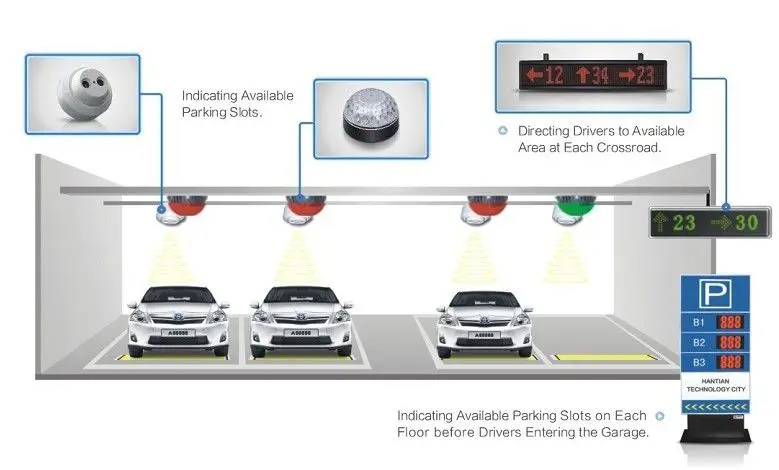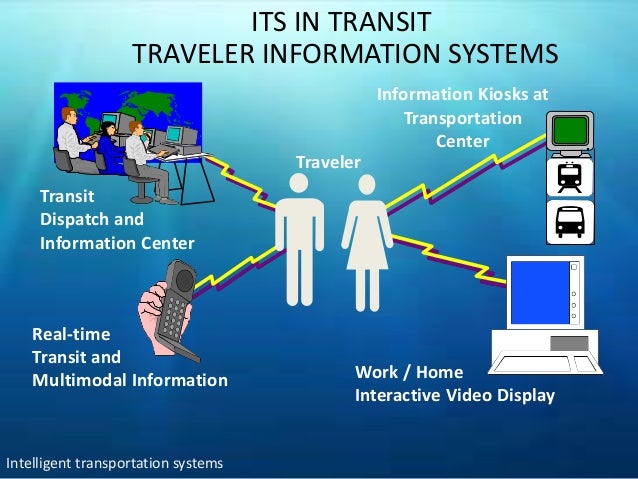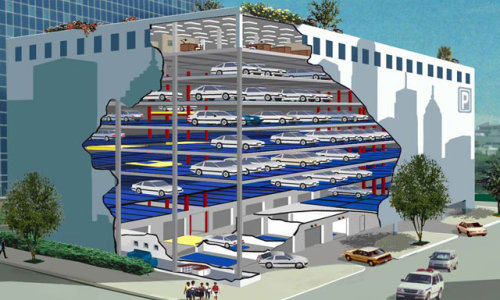How is everyone doing? Hope you are doing as well as I am, or better. I have just came back from the Chinese New Year celebration in Taiwan. It was so happening at there. There were so many fireworks to see, foods to eat, fun things to play and many more. I also managed to take some of photos with the locals. They are friendly and willing to share their thoughts on the foods at their night market.

The place was congested with tourists and locals, trying to buy some decorations for their homes. I also managed to grab some as a souvenirs for my friends & families at home, in Singapore. While I was there, I also managed to go shopping at their malls. It was so crowded that I begin to think how did all these people came here. So I went to their carpark just to have a sneak peek and I was astonished how full was their parking lots. I was thinking, wouldn't it be great if they have a smart parking system? After all, we are in the IoT era.

What is Smart Parking?
Smart Parking is a parking strategy that combines technology and human innovation in an effort to use as few resources as possible—such as fuel, time and space—to achieve faster, easier and denser parking of vehicles for the majority of time they remain idle. It's based on the fundamental ecological principle that we are all connected. Parking and transportation are both essential in the movement of people and goods. The Smart Parking and Intelligent Transportation vision and overlapping technologies are steadily melding into one integrated stream.
What are the Smart features?
The smart parking system can be divided into five major categories: Parking Guidance and Information System (PGIS), transit based information system, smart payment system, E-parking and automated parking. Further discussion on the implementation and characteristic of each of the smart parking system category together with examples of its implementation around the world will also be provided.
Parking Guidance and Information System (PGIS): The implementation of Parking Guidance and Information System (PGIS) encompasses two major categories. The PGIS can either include the entire city area or function only within the car park facility. Setting aside the differences, both the PGIS implemented in many major cities offer similar advantages similar to those of smart parking system as discussed earlier. Both provides information which aids the decision making process of the drivers in reaching their destination location and aids them in locating a vacant parking space within the car park facility. The city wide PGIS is indeed helpful in assisting drivers to car park with vacant parking spaces via the information occupancy status for various car parks around the city as well as other relevant information. On the other hand, guidance in locating the vacant parking space within the car park is ultimately provided by PGIS implemented within the car park.

Transit based information system: The functionality of transit based information system implemented in countries such as France, Germany, Ireland, Japan, Switzerland, the United Kingdom and the United States is actually similar to PGIS. The difference exist in the fact the Transit Based Information System concentrates on guiding user to park-and-ride facilities. It provides real-time information on the status of each car park and public transportation such as the schedules and traffic condition to the public. The additional information provided enables the patrons to plan for transit in advance without getting into any inconvenience. Among its benefits includes increase in the utilization of public transportation as the primary means of transportation as they can leave their vehicle in the car park and switch to public transportation with ease. This will indirectly lead to an increase in the transit revenue.

Smart payment system: The smart payment system is implemented in the effort to overcome the limitation of the conventional payment methods by revamping the payment method via parking meter and introduce new technologies. This is because the conventional method causes delay and inconvenience for the patrons as they have to deal with cash. It also reduces maintenance and staffing requirement for payment handling purposes as well as traffic control. In general, the Smart Payment System implemented consists of contact method, contactless method and mobile devices. While the contact method involves the use of smart cards, debit cards and credit cards, the contactless method involves the use of contactless cards, mobile devices as well as Automated Vehicle Identification (AVI) tag whereby RFID technologies are utilized. As contact methods requires contact of the cards with parking meter or payment machines in the facility, the latter offers more convenience to the patrons.
E-parking: E-parking provides an alternative for patrons to enquire the availability and/or reserve a parking space at their desired parking facility to ensure the availability of vacant car park space when they arrive at the parking facility. The system can be accessed via numerous methods such as SMS or through the internet. Some of the additional benefits of using the E-parking system aside from those collectively gained by smart parking system are that it can be extended easily to incorporate the payment mechanism of smart payment system whereby payments by the patrons are made hassle free using the technologies discussed previously. Customized information can also be provided to the patrons either before or during their trip to the car park.
Automated parking: Automated parking involves the use of computer controlled mechanism, which allows patrons to drive up to the bay, lock the cars and let the machines automatically place the vehicle in the allocated space. This type of car park offers maximum utilization of space as it is machine controlled unlike conventional car park where space is needed for navigation of vehicle within the car park. Among its benefits are that the implementation works great in locations, where there are limited room for expansion due to its structure. Besides that, the Automated Parking System also offers efficiency in car storage as it allows car stacking and the patron does not even need to go into the car park which indirectly provides extra safety measures which covers both the vehicles and patrons.

Benefits of a Smart Parking?
Smart Parking involves the use of low cost sensors, real-time data and applications that allow users to monitor available and unavailable parking spots. The goal is to automate and decrease time spent manually searching for the optimal parking floor, spot and even lot. Some solutions will encompass a complete suite of services such as online payments, parking time notifications and even car searching functionalities for very large lots. A parking solution can greatly benefit both the user and the lot owner. Here are some of the top benefits:
- Optimized parking – Users find the best spot available, saving time, resources and effort. The parking lot fills up efficiently and space can be utilized properly by commercial and corporate entities.
- Reduced traffic – Traffic flow increases as fewer cars are required to drive around in search of an open parking space.
- Reduced pollution – Searching for parking burns around one million barrels of oil a day. An optimal parking solution will significantly decrease driving time, thus lowering the amount of daily vehicle emissions and ultimately reducing the global environmental footprint.
- Enhanced User Experience – A smart parking solution will integrate the entire user experience into a unified action. Driver’s payment, spot identification, location search and time notifications all seamlessly become part of the destination arrival process.
- New Revenue Streams – Many new revenue streams are possible with smart parking technology. For example, lot owners can enable tiered payment options dependent on parking space location. Also, reward programs can be integrated into existing models to encourage repeat users.
- Integrated Payments and POS – Returning users can replace daily, manual cash payments with account invoicing and application payments from their phone. This could also enable customer loyalty programs and valuable user feedback.
- Increased Safety – Parking lot employees and security guards contain real-time lot data that can help prevent parking violations and suspicious activity. License plate recognition cameras can gather pertinent footage. Also, decreased spot-searching traffic on the streets can reduce accidents caused by the distraction of searching for parking.
- Real-Time Data and Trend Insight – Over time, a smart parking solution can produce data that uncovers correlations and trends of users and lots. These trends can prove to be invaluable to lot owners as to how to make adjustments and improvements to drivers.
- Decreased Management Costs – More automation and less manual activity saves on labor cost and resource exhaustion.
- Increased Service and Brand Image – A seamless experience can really skyrocket a corporate or commercial entities brand image to the user. Whether the destination is a retail store, an airport or a corporate business office, visitors will surely be impressed with the cutting edge technology and convenience factors.

Conclusion
The various types of smart parking system and has been presented. From the various examples of the implementation of the smart parking system being presented, its efficiency in alleviating the traffic problem that arises especially in the city area where traffic congestion and the insufficient parking spaces are undeniable. It does so by directing patrons and optimizing the use of parking spaces.
With the study on all the sensor technologies used in detecting vehicles, which are one of the most crucial parts of the smart parking system, the pros and cons of each sensor technologies can be analyzed. Although, there are certain disadvantages in the implementation of visual based system in vehicle detection as described earlier, the advantages far outweighs its disadvantages.